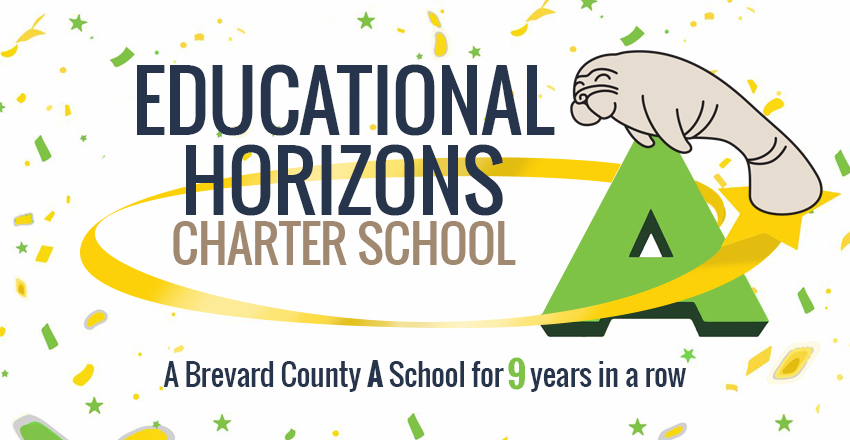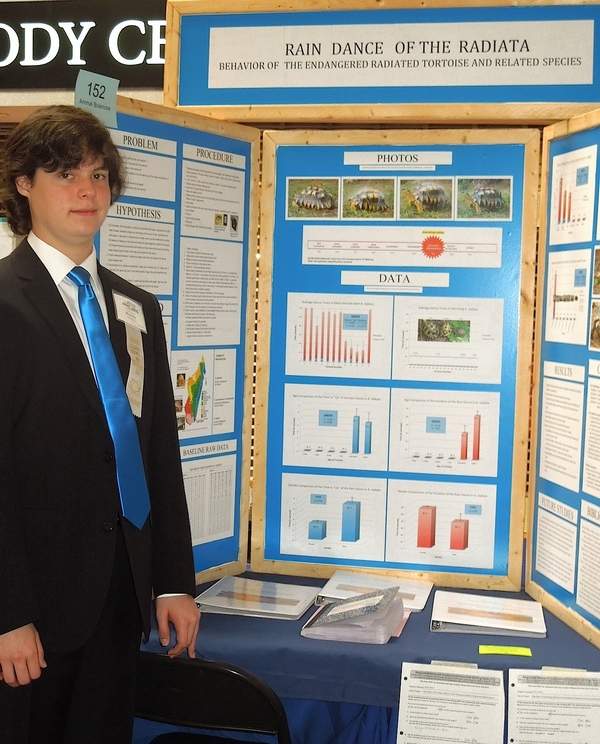Educational Horizons Charter School, in West Melbourne, Florida is a high performing Florida Charter School.
Category: Charter Schools
2013-14 ESEA School Public Accountability Report
The 2013-14 Elementary and Secondary Education Act School Public Accountability Reports (ESEA SPARs) are now available. The SPARs meet the ESEA’s requirement for schools and districts to provide parents with an annual status report at the beginning of each year.
Educational Horizons Charter School reports can be found here.
Please contact us if you have any questions.
ESEA SPAR Indicators
The following list shows the indicators that are required for the annual public disclosure reports under ESEA provisions, as well as additional indicators providing data of interest on the status of Florida’s public schools.
October Membership
Kindergarten Readiness
Federal Uniform Graduation Rate
Five-year Graduation Rate
High School Dropout Rate
Student Test Results (FCAT 2.0, EOCs and FAA) Reading, Math and Science
National Assessment of Education Progress (NAEP) scores at the state level
New Teachers and StaffTeachers by Professional Degree Level
Classes Taught by Teachers Teaching In-Field/Out-of-Field
Classes Taught by Highly Qualified Teachers
School Performance Grade
Learning Gains for the Lowest 25% for Reading and Math
Identified Schools for ESEA Flexibility
Annual Measurable Objectives
How and Why Charter Schools Do More With Less
When most people think of funding for public education, chances are they don’t think about funding for charter schools. There is a widespread misconception in Florida that charter schools are not really public schools. The truth is public charter schools have been a vital part of Florida’s K-12 education system for almost two decades and they are, indeed, public schools.

Charter schools are accountable in ways that traditional district schools are not. For example, they are required by state statute to help students make academic gains and because their students are there by choice, not assignment, charter schools must meet the high expectations of the families they serve – providing high quality education, helping students achieve academically and, in many cases, preparing them for college — or risk losing those students to another school. And public charter schools must meet those requirements with significantly less funding than a district-run public school while being fiscally sound and maintaining financial integrity.
According to a recent study by the University of Arkansas, Florida’s charter schools received 20.7 percent less funding than district schools; that’s $8,047 vs. $10,154 per pupil in 2011. Charter Funding: Inequity Expands reveals the disparity is greatest in major cities and that the funding gap has grown in recent years. If all Florida school districts received the same level of per pupil funding as charter schools, districts would have received over $5 billion less in total revenues.
“These figures indicate inequity built into our current state education funding policies. However, there are a few who seek fairness for all students. Just this week, on April 29, 2014, the House of Representative took a brave step to protect charter school students and allocated $75 million to facilities funding,” explains Robert Haag, President of the Florida Consortium of Public Charter Schools.
More than 239,000 families in Florida have chosen public charters as the school for their children, but they didn’t know this choice came with built-in inequity. School districts and charters both receive funding based on individual student needs. The formula also adjusts funding based on school district characteristics, such as size or location in a rural or urban area. Charters do not receive this adjustment, but are given a statewide average instead.
The formulas may be complex, but the math is simple. Charter schools in Florida receive an estimated 80 cents for every dollar a district school receives. Is it because charter students are worth less than other public school students? No, it is because the state funding priorities have not kept up with parental demand.
As demand for charter schools from parents around the state grows, and as charter schools continue to help Florida’s children achieve academically, funding and fairness for all children in public education should follow.
Originally published on the Florida Consortium of Public Charter Schools website.
Educational Horizons Gets Ready for National School Choice Week in January

National School Choice Week provides an unprecedented opportunity, every January, to shine a spotlight on the need for effective education options for all children. Independently planned by a diverse coalition of individuals, schools and organizations, NSCW features thousands of special events across the country.
Educational Horizons will be celebrating National School Choice Week with an Open House Jan. 27-29, 2014 from 9:30-10:30 each day.
This is a great opportunity for interested parents to visit the school, meet our teachers, as well as observe students in the classroom working with Montessori materials. You will also have a chance to meet other interested parents, and complete the application form for the upcoming 2014-2015 school year.
National School Choice Week 2014 is nation’s largest-ever series of education-related events
The Week will include an unprecedented 5,500 events across all 50 states, with a goal of increasing public awareness of the importance of empowering parents with the freedom to choose the best educational environments for their children.
#DYK over 1.1 million students will be involved in #SCW 2014? — School Choice Week (@schoolchoicewk) January 9, 2014
“During National School Choice Week, millions of Americans will hear the uplifting and transformational stories of students, parents, teachers, and school leaders who are benefiting from a variety of different school choice programs and policies across America,” said Andrew Campanella, president of National School Choice Week. “Our hope is that by letting more people know about the successes of school choice where it exists, more parents will become aware of the educational opportunities available to their families.”
National School Choice Week began in 2011 as an independent, grassroots-led effort. The movement has grown from 150 events in 2011 to a confirmed 5,500 events planned for 2014.
Learn more about National School Choice Week
Tweets by @schoolchoicewk National School Choice Week is a nonpartisan, nonpolitical public awareness effort. They welcome all Americans to get involved and have their voices heard!

The Process of Normalization

Originally published on the North American Montessori Teacher’s Association website.
In Montessori education, the term “normalization” has a specialized meaning. “Normal” does not refer to what is considered to be “typical” or “average” or even “usual.” “Normalization” does not refer to a process of being forced to conform. Instead, Maria Montessori used the terms “normal” and “normalization” to describe a unique process she observed in child development.
Montessori observed that when children are allowed freedom in an environment suited to their needs, they blossom. After a period of intense concentration, working with materials that fully engage their interest, children appear to be refreshed and contented. Through continued concentrated work of their own choice, children grow in inner discipline and peace. She called this process “normalization” and cited it as “the most important single result of our whole work” (The Absorbent Mind, 1949).
She went on to write,
Only “normalised” children, aided by their environment, show in their subsequent development those wonderful powers that we describe: spontaneous discipline, continuous and happy work, social sentiments of help and sympathy for others. . . . An interesting piece of work, freely chosen, which has the virtue of inducing concentration rather than fatigue, adds to the child’s energies and mental capacities, and leads him to self-mastery. . . . One is tempted to say that the children are performing spiritual exercises, having found the path of self-perfectionment and of ascent to the inner heights of the soul. (Maria Montessori, The Absorbent Mind, 1949)
E.M. Standing (Maria Montessori: Her Life and Work, 1957) lists these as the characteristics of normalization: love of order, love of work, spontaneous concentration, attachment to reality, love of silence and of working alone, sublimation of the possessive instinct, power to act from real choice, obedience, independence and initiative, spontaneous self-discipline, and joy. Montessori believed that these are the truly “normal” characteristics of childhood, which emerge when children’s developmental needs are met.

Former Educational Horizons student wins top national science prize
Former Educational Horizons student, River Grace won the top $25,000 prize in the Broadcom MASTERS national science competition.
The 14-year-old West Melbourne resident was honored with the Samueli Foundation Prize for overall excellence in science, technology, engineering and math, also known as the STEM fields. River also will have a newly discovered asteroid named after him. Grace was one of 30 finalists from 17 states who attended the third annual Broadcom Math, Applied Science, Technology and Engineering for Rising Stars, or MASTERS, competition. “I had no idea I’d win this,” Grace said. “Any one of us could have won.”
River’s project was titled “Rain Dance of the Radiata: Behavior of the Endangered Radiated Tortoise and Related Species.”
While researching the Radiated Tortoise, River realized that not much is known about the species, which is only found in southern Madagascar. It’s critically endangered, and scientists estimate it could be extinct in the next 20 years.

River Grace (third from left) won the Broadcom MASTERS competition. With him were, from left: Henry Samueli of Broadcom Corp., Susan Samueli of the Samueli Foundation, Scott McGregor of Broadcom Corp., Paula Golden of Broadcom Foundation and Rick Bates of SSP. Below are some related news articles and tweets about his project and recent trip to Washington D.C. Way to go, River!
‘Rain Dance’ lands local student on national list – Florida Today
West Shore student wins top national science prize – Florida Today
Tortoise-studying teen takes top Broadcom prize – Science News
Tortoise ‘Rain Dance’ Wins Broadcom MASTERS Science Fair – Business Insider
West Shore student’s endangered tortoise project earns $25,000 – Florida TodayThe mysterious "rain dance" of the radiated tortoise landed River Grace, 14, the MASTERS $25k Grand Prize. Read more: http://t.co/BnmAvShggZ
— Broadcom Corporation (@Broadcom) October 3, 2013
Congrats to River Grace, top winner at the national Broadcom MASTERS #science competition #Brevard @brevardSchools pic.twitter.com/sCaiHwJsHk
— Mackenzie Ryan (@Mackenzie_Ryan) October 2, 2013
Brevard Zoo would like to congratulate local student River Grace, winner of the Samueli Foundation Prize for… http://t.co/eg3KVRhqhj
— BrevardZoo (@BrevardZoo) October 3, 2013
West Shore 'scientist' national winner: West Shore Jr./Sr. High School student River Grace won the top $25,000… http://t.co/NzY1CpKZmA
— Brevard County News (@brevardnews) October 3, 2013
Congrats to River Grace on winning the $25,000 Samueli Foundation Prize for overall STEM excellence: http://t.co/a2fNcO2Ztv #brcmMASTERS
— Society for Science (@Society4Science) October 2, 2013
Post by Brevard Zoo.








